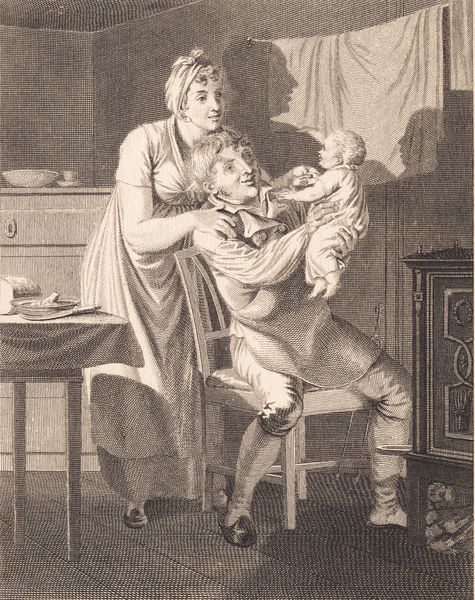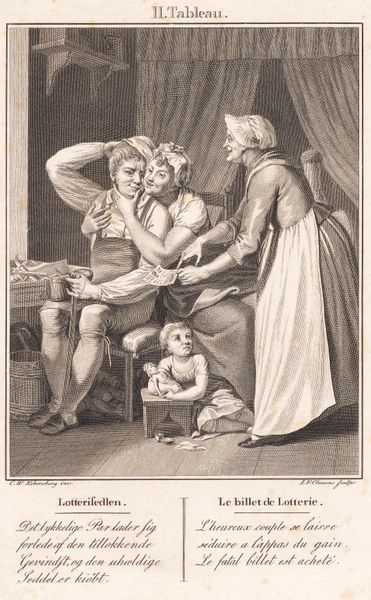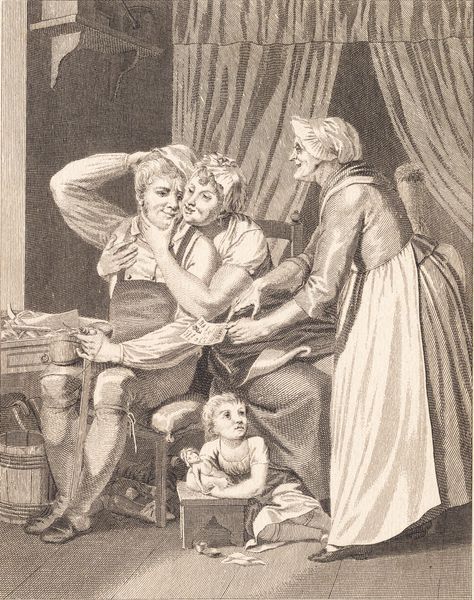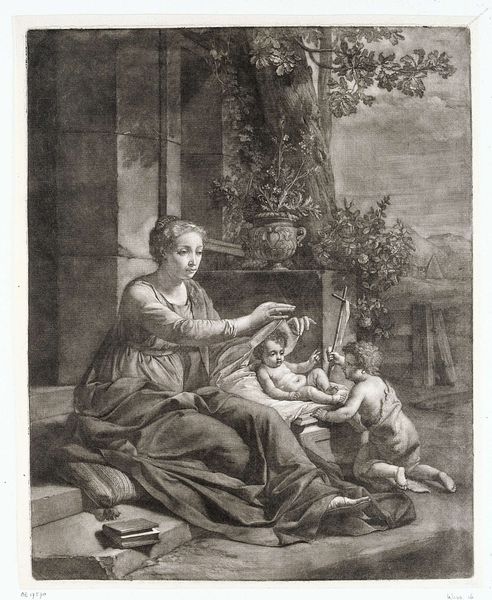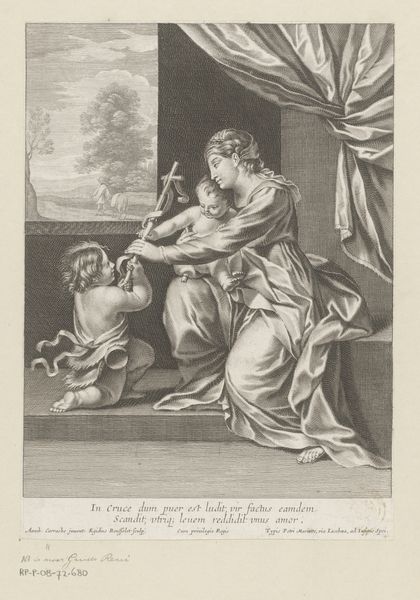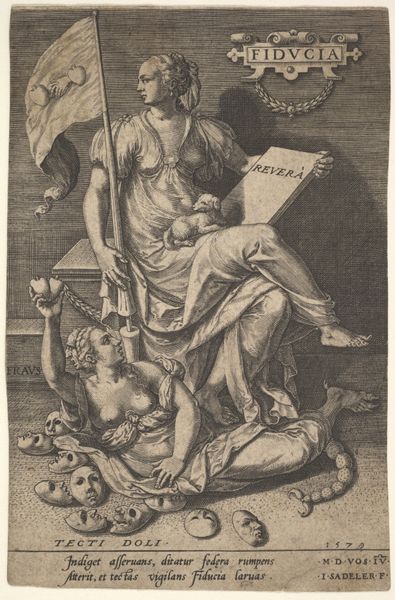
print, etching
#
portrait
#
narrative-art
# print
#
etching
#
romanticism
#
19th century
#
genre-painting
Dimensions: 307 mm (height) x 213 mm (width) (bladmaal)
Curator: Here we have “Misery,” an etching by J.F. Clemens created around 1815 or 1816. It's part of the collection at the SMK, the Statens Museum for Kunst. Editor: The first thing I notice is this overwhelming sense of warmth and domesticity, but with a stark, almost melancholic feel to the lighting and the gray scale. It suggests the complex symbolism of the home. Curator: Yes, I agree. There's definitely an intersection of warmth and anxiety here. You have the father proudly holding up the baby, but also a clear sense of a gendered division of labor, with the woman standing by, presumably after tending to domestic chores, considering the dishes on the nearby table. How does this portrayal fit into artistic representation of motherhood and family during that period? Editor: The etching is filled with conventional symbols, the most poignant of which is the home space itself. It speaks of enclosure, comfort, perhaps of stifled possibilities, or it embodies an iconography of the ideal life of women and their place within their families during that time. Even in this modest domestic scene, the role of labor in cultivating happiness at home has an almost proverbial character. Curator: The French title of this artwork is “L'heureuse Médiocrité,” and this concept challenges the very idea of happiness at the core of domesticity. To me, the parents' strained smiles almost signal this understanding. Can their domestic existence only offer a mediated happiness? Editor: Perhaps it reveals an understanding of “Mediocrity” as a desirable trait in times of political upheaval and reflects a desire for simpler values focused on peace and productivity that were traditionally perceived as ideal domestic goals in the early 19th Century. Curator: Ultimately, "Misery" by J.F. Clemens is more than just a sentimental portrait of family bliss; it provides critical social insight. Editor: Yes. Through its deliberate, evocative symbols, it invites us to consider what domesticity really meant in the early 19th Century and what visual memory can reveal to us now.
Comments
No comments
Be the first to comment and join the conversation on the ultimate creative platform.
